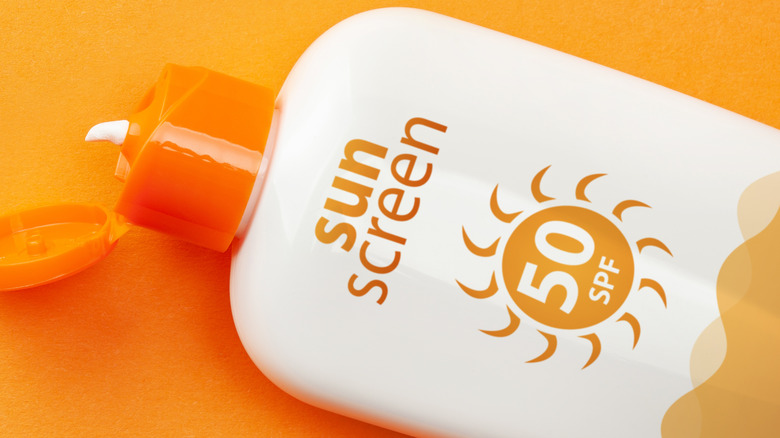The Best Time Of Day To Put On Sunscreen, According To Science
Sunscreen probably isn't on your mind when you get ready in the morning. Unless it's the middle of summer or you plan to spend the whole day outside, that bottle of Coppertone probably sits untouched in the back of your cupboard.
As the American Cancer Society explains, skin cancer is "by far the most common" cancer in America. It can develop in several ways, each with its own set of symptoms and treatment options. Depending on when it is caught, a full recovery is possible, but every situation and diagnosis is different.
Consistent sunscreen use is one of the best ways to avoid skin cancer. In order to get the most use out of each application, it's important to know how long sunscreen lasts and when you should apply it. Otherwise, you might end up with less sun protection than you think. Here is what you need to know about the product you are applying and when to use it.
Sunscreen application depends on your schedule
While sunscreen is an important tool for skin cancer prevention, it's important to note that it is not a guarantee. Daily use of SPF15 sunscreen reduces the risk of melanoma by 50% and the risk of squamous cell carcinoma by 40%.
These are still huge numbers when dealing with cancer. However, these rates also mean that it's important to know how long sunscreen lasts so you can apply it as often as needed. Sunscreen works like a cup that absorbs the sun's rays before the radiation can interact with your skin. After a while, the cup is full and can't hold any more radiation. How long exactly? Two hours, give or take. At that point, it's time to apply another coat.
Your first application, however, is a little more specific. Sunscreen takes around 30 minutes to absorb into the skin, meaning you should apply your sunscreen at least half an hour before you head outside, and then again every 2 hours after that.


